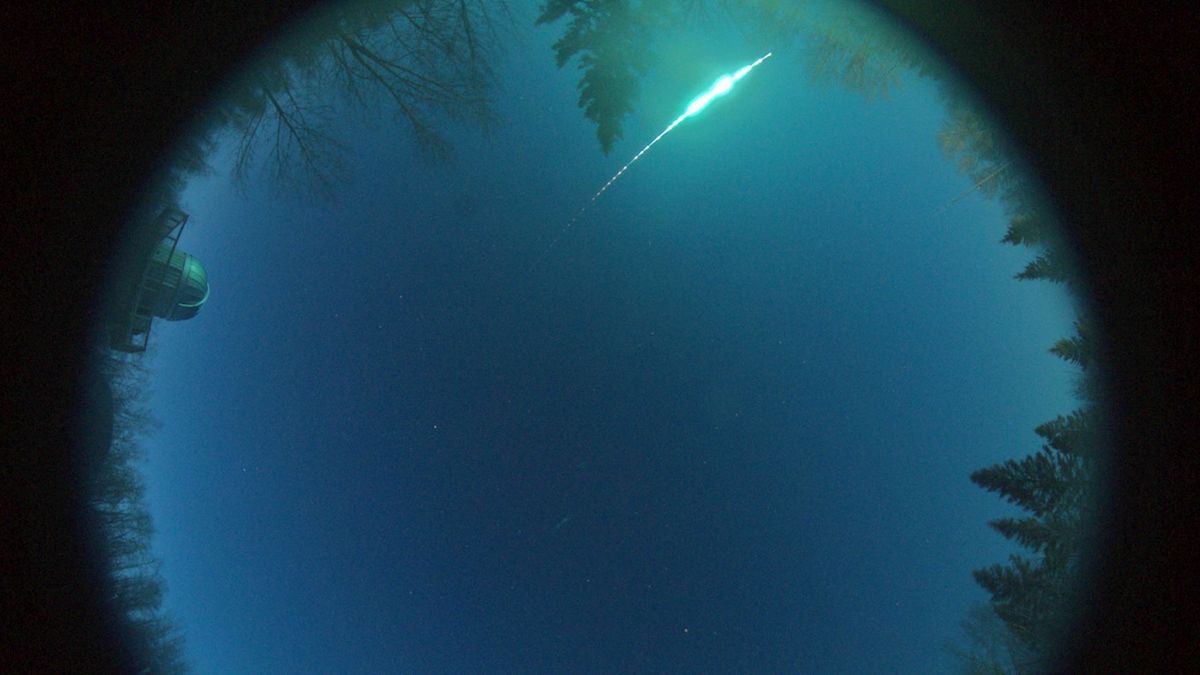Science
Related: About this forumGrapefruit-size fireball from mysterious Oort Cloud could rewrite the history of the solar system
By Jamie Carter published 4 days ago
Rocky fireballs like the one that fell over Alberta, Canada last year shouldn't originate from the icy Oort Cloud... but this one apparently did.

A fireball streaks across the sky over Alberta, Canada (Image credit: University of Alberta)
A dazzling fireball that ended its cosmic journey over central Alberta, Canada could change astronomers' understanding of how the solar system formed 4.5 billion years ago.
Caught on camera on Feb. 22, 2021, the grapefruit-size rocky meteoroid is thought to have come from the Oort Cloud, a reservoir of celestial objects that encircles the entire solar system and separates it from interstellar space. Scientists have never directly observed rocky objects in the Oort Cloud and have long believed that it holds only icy objects. But the rocky object that burnt up over Canada challenges popular theories of the Oort Cloud's formation, and the early solar system's formation in general, according to a study published Dec. 12 in the journal Nature Astronomy(opens in new tab).
"This discovery supports an entirely different model of the formation of the solar system, one which backs the idea that significant amounts of rocky material co-exist with icy objects within the Oort cloud," lead study author Denis Vida, a meteor physics postdoctoral researcher at Western University in London, Ontario, Canada, said in a statement. "This result is not explained by the currently favored solar system formation models. It's a complete game changer."
According to NASA, the Oort Cloud is thought to have formed when gravity from the newly formed planets pushed icy objects away from the sun. Gravity from the Milky Way galaxy caused the objects to settle on the edge of the solar system instead.
More:
https://www.livescience.com/rocky-fireball-oort-cloud
2naSalit
(92,695 posts)I don't think "far out" quite covers it.
ProfessorGAC
(69,882 posts)The outer edge of Oort is 18 trillion miles from the sun.
That's 3/4ths of the way to the next nearest star!
2naSalit
(92,695 posts)I'm glad you did the math, I am not capable on that part but these are the things I ponder when I dare to look into the night sky with strong binoculars. It's truly humbling.
![]()
ProfessorGAC
(69,882 posts)If the Oort Cloud goes out >3 light-years & alpha Centauri is 4.2 light-years away, if can't have an Oort Floud like ours. Otherwise they'd overlap.
Maybe they do. I'll have to check.
On Edit: the clouds do overlap, but the non-stellar mass of that binary system is far lower so its cloud is less dense.
But, astronomers say there is highly likely an overlap.
2naSalit
(92,695 posts)Could it be that a difference in density would have to be present for overlap to occur?
Then again, are they blending or merely acting like they are separated by a skin or membrane like barrier? Something like two water balloons in a flat baking dish - merely for visualizing.
![]()
ProfessorGAC
(69,882 posts)If it's less dense, it would be harder to detect and that far out it might be really hard to tell one cloud from the other.
Especially true if our cloud is denser than that of Centauri.
I used to read astronomy & cosmology books all the time. Probably read 3p or 40. Not sure why I stopped. Maybe if I hadn't stopped , I would have known this before I asked the question!